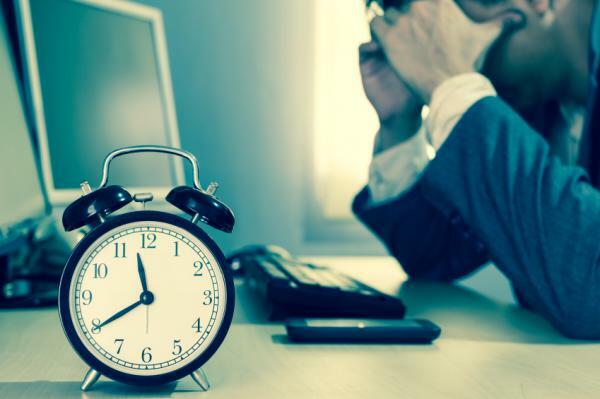
In the phenomenon of mobbing, it has gained special importance, as it is evidenced as the cause of depression, generalized anxiety, and even post-traumatic stress disorders, that lead to absenteeism, abandonment of the job, increase in accidents, decrease in the quantity and quality of work, etc., which produces high costs in industrialized society and in the victim of mobbing who sees his career or profession, his social and financial situation, and even her health threatened (Carreras et al. 2002). Are consequences of workplace harassment They will be analyzed in the following PsicologíaOnline article.
Index
- Consequences of workplace harassment
- Physical consequences
- Psychic consequences
- Social consequences
- Labor consequences
Consequences of workplace harassment.
For Hirigoyen (2001) the first symptoms that appear are very similar to stress: fatigue, nervousness, sleep problems, migraines, digestive problems, lumbar pain; but if the bullying persists over time, then a major depressive state can be established. According to the survey carried out by Hirigoyen (2001), 69% of the people who answered the questionnaire had suffered from a major depressive state and 52% had psychosomatic disorders varied.
For said author, Workplace bullying leaves indelible marks that can range from post-traumatic stress to recurring shame or even lasting changes in her personality. The devaluation persists even if the person moves away from her stalker. The victim wears a psychological scar that makes her fragile, that leads her to live in fear and doubt everyone. Piñuel and Zabala (2001) structure the consequences of mobbing in the affected worker in the following sections:
Physical consequences.
There is a wide range of somatizations:
- disorders cardiovascular (hypertension, arrhythmias, chest pains, etc.)
- disorders muscular (lumbar pain, neck pain, tremors, etc.)
- disorders respiratory (feeling of suffocation, flushing, hyperventilation, etc.)
- disorders gastrointestinal (abdominal pain, nausea, vomiting, dry mouth, etc.)

Psychic consequences.
- Anxiety
- depressed mood
- apathy or loss of interest in activities that previously interested or brought you pleasure
- sleep disturbances (insomnia and hypersomnia)
- deep feelings of guilt
- increased appetite
- cognitive distortions (failure, guilt, ruin, uselessness, etc.)
- hypervigilance
- suspicion
- emotional lability with frequent crying
- unstructured thoughts of suicide, no plan or suicide attempts
- feelings of helplessness and helplessness
- fears of the workplace, of picking up the phone, of confronting their boss
- fear of going back to work and not being able to do your job properly
- afraid to go out on the street
- negative expectations about your future
- selective attention to everything related to failure
- decreased memory capacity and difficulties in maintaining attention and recurring thoughts about the mobbing situation
(García and Rolsma, 2003; Fornés, 2002).
In the victim there are personality changes with a predominance of obsessive traits (hostile attitude and suspicion, chronic feeling of nervousness, hypersensitivity to injustice), depressive features (feelings of helplessness, anhedonia, learned helplessness) (Gómez, Burgos & Martín, 2003) and alteration of sexual desire (hypoactivity sexual, etc.).
Social consequences.
The social effects of workplace harassment are characterized by the appearance in the victim of isolation behaviors, avoidance and withdrawal (INSHT, 2001); as well as resignation, the feeling of alienation with respect to society and a cynical attitude towards the environment (Gómez, Burgos and Martín, 2003).
A progressive isolation is usually generated around the victim, due, in part, to the withdrawal of some of their friends, who upon seeing the situation turn their backs on it and disappear, along with the active isolation that the victim exercises.
Doesn't want to be with other people so as not to have to give explanations about his departure from the organization, and due to his feeling of failure and lack of Confidence thinks that other people consider him a failure, and is afraid to face possible critics.

Labor consequences.
The consequences in the workplace involve the progressive destruction of the victim's working life. Due to mobbing, a stress leave is usually requested, during which the company can carry out firing or refusing to pay him his salary, spreading rumors about the victim and lying about his departure from the business.
With this, it manages to present a negative image of the victim, which contributes to reducing their employability, and considering herself unable to work, and showing negative expectations about her performance and performance labor. The victim usually suffers what Piñuel and Zabala (2001) call 'economic prostration'. From the first month after the dismissal, the company does not pay him his salary, which considerably reduces his economic level.
In any case, it could be said that the consequences on the victim's health depend on the duration of the bullying, the intensity of the aggression as well as their own vulnerability. The impact of harassment is stronger if it is a group against a single person than if it is a single individual, it also appears that harassment by a superior is more serious than harassment by a co-worker. Clinical symptoms that harassment produces in the victim have been described, among which different stages can be distinguished (Suárez et al., 2009):
- Stage of self-assertion. The victim detects the conflict or derogatory treatment, interpreting that the reason is on her side and that there is a misunderstanding.
- Bewilderment stage. The victim feels puzzled, doubts, does not know what is happening and begins to think about her probable responsibility for what happened.
- Defenseless stage. In this phase, the victim strives to please and to be considered better; This effort ends up unleashing a feeling of helplessness and defenselessness that culminates in a depressive state.
- Traumatic or anxiety stage. If the bullying persists, the victim tends to feel vulnerable and present a state of anxiety, impulsive behaviors and loss of control being frequent.
- Chronic stabilization stage. A feeling of worthlessness and lack of self-esteem is likely to persist, and an anxious-depressive state and post-traumatic stress disorder may establish.
This article is merely informative, in Psychology-Online we do not have the power to make a diagnosis or recommend a treatment. We invite you to go to a psychologist to treat your particular case.
If you want to read more articles similar to The consequences of workplace harassment, we recommend that you enter our category of Coaching.


